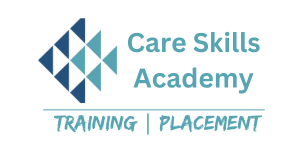In today’s rapidly advancing technological world, printed circuit boards (PCBs) are the foundation of most electronic devices. From smartphones and computers to industrial machinery and medical equipment, PCBs serve as the backbone that powers and controls these technologies. However, like all electronics, PCBs can encounter issues, leading to the need for repair. This growing demand has opened doors for individuals with PCB repair skills, making it a highly sought-after expertise. Enrolling in a PCB Repairing Course can be your entry point to this lucrative and dynamic field.
What is PCB Repair?
PCB repair involves diagnosing and fixing faults in the intricate networks of electrical pathways and components embedded on a printed circuit board. PCBs are made up of layers of conductive material, often copper, and contain various components like capacitors, resistors, transistors, and microchips. Over time, these components can fail, or connections may break due to wear, corrosion, or other external factors.
The process of repairing a PCB can range from simple tasks, like replacing faulty components, to more complex jobs like soldering, tracing broken connections, and reprogramming integrated circuits. Mastering these skills requires a solid understanding of electronics and hands-on experience, which a professional PCB repairing course can provide.
Benefits of Taking a PCB Repairing Course
- Growing Industry Demand
With the ever-increasing use of electronic devices in all sectors, the need for qualified PCB repair technicians is skyrocketing. Whether it’s consumer electronics, industrial machinery, or automotive control systems, PCBs are ubiquitous, and the ability to repair them is a valuable skill. - Diverse Career Opportunities
By enrolling in a PCB repairing course, you open yourself up to a wide range of career opportunities. Repair technicians are needed in industries such as telecommunications, healthcare, manufacturing, and aerospace. You could work as a freelance technician, join a repair shop, or even start your own business specializing in PCB repair. - Comprehensive Skill Development
A professional PCB repairing course is designed to cover all aspects of PCB maintenance, troubleshooting, and repair. You’ll learn how to read circuit diagrams, identify faults, work with advanced diagnostic tools, and handle delicate components with precision. Courses also teach soldering techniques, surface mount technology (SMT), and through-hole technology, all of which are essential in modern PCB repair. - Hands-On Training
One of the most significant advantages of taking a PCB repairing course is the hands-on experience. Instructors provide practical training, allowing students to work with real PCBs, practice soldering, and apply diagnostic methods in real-world scenarios. This ensures that by the time you complete the course, you’re equipped with the practical skills needed to tackle real repair challenges. - Affordable and Short Duration
Unlike lengthy degree programs, most PCB repairing courses are relatively short and affordable. You can gain a highly specialized skill set in a matter of weeks or months, making it a cost-effective option for individuals looking to start a new career or add to their existing skill set.
What to Expect in a PCB Repairing Course
A PCB repairing course typically covers the following key areas:
- Understanding PCB Structure: Learn about the different types of PCBs, layers, and materials used in their construction.
- Component Identification: Familiarize yourself with the components found on a PCB and how they interact.
- Soldering Techniques: Master the art of soldering and desoldering, crucial for replacing or attaching components on a PCB.
- Troubleshooting and Diagnostics: Gain expertise in identifying common PCB faults, testing circuits, and using diagnostic tools like multimeters and oscilloscopes.
- Rework and Reflow: Learn advanced techniques like reflow soldering, often used in modern surface-mount devices.
- Safety Measures: Understand the precautions needed when working with electronic components to avoid damaging the board or harming yourself.
Why Now is the Perfect Time to Enroll
The demand for PCB repair professionals is expected to continue growing as electronic devices become even more integral to daily life and industry operations. By enrolling in a PCB repairing course, you position yourself at the forefront of this trend, gaining skills that are not only in demand but also future-proof. Moreover, repairing PCBs rather than replacing them promotes sustainability, reducing electronic waste and contributing to environmental preservation.
Conclusion
A PCB Repairing Course offers an exciting and rewarding opportunity for individuals interested in electronics and technology. With comprehensive training, hands-on experience, and growing career prospects, it’s an excellent investment in your future. Whether you’re looking to start a new career or enhance your technical skills, mastering PCB repair can lead to a fulfilling and profitable career path in the ever-evolving world of electronics.

